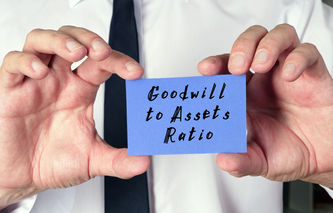Definition
The foreign exchange ratio allows analysts to estimate the impact a change in exchange rates has on the net income of a company. As exchange rates change over time, companies are required to recognize both gains and losses on certain transactions or obligations. The foreign exchange ratio allows analysts to understand the impact these changes have on net income.
Calculation
Foreign Exchange Ratio = Foreign Currency Gains and Losses / Net Income
Explanation
Unless a multinational company convinces their trade partners, lenders, and customers to conduct business in a single currency, the company will experience gains or losses as foreign exchange rates change over time. The foreign exchange ratio allows the investor-analyst to understand the impact exchange rates have on the net income of a company. The types of transactions that result in a foreign currency gain or loss include:
Loans: if the company's primary currency is the U.S. dollar and they borrow money from a French bank, as the ratio of francs to dollars change over time the obligation to that bank changes.
Trade Partners: if a company purchases raw material from a business located in another country, the value of their accounts payable will fluctuate as the exchange rate between the two countries varies.
Customers: as is the case with accounts payable, the value of the company's accounts receivable generated by sales in foreign countries will fluctuate as exchange rates vary.
Periodically, companies will need to re-value assets (accounts receivable), and liabilities (debt and accounts payable) appearing on their balance sheet. An increase or decrease to these accounts eventually make their way to the company's income statement as foreign currency gains or losses, which appear as non-operating income items.
Comparing the magnitude of these gains or losses to net income allows the investor-analyst to understand the impact exchange rates have on the profitability of the company.
Example
Company A is located in the United States and its primary trade partner is Company XYZ, which is located in China. In the last quarter, the Chinese Yuan strengthened against the U.S. Dollar. When Company A closed its financial books for the quarter, it recorded a foreign currency loss of $384,000 on net income of $16,695,700. The foreign exchange ratio for Company A would be calculated as:
= $384,000 / $16,695,700, or 2.3%
Based on this information, the analyst concluded Company A's profits would have been 2.3% higher if not for its exposure to the Chinese Yuan.




